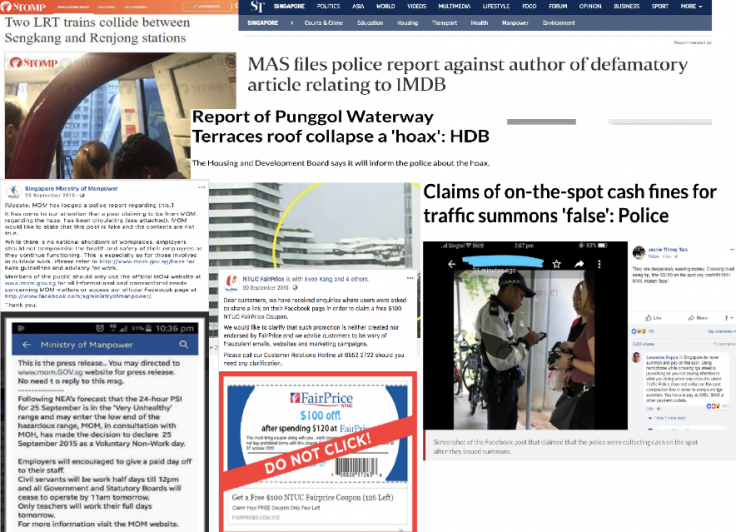
The government of Singapore has put all its efforts to combat the surge of fake news in the country and urged people to understand and analyse any content before jumping into a conclusion.
In September 2018, the Select Committee on Deliberate Online Falsehoods made 22 recommendations to tackle fake news and the Committee stated that "there is no one silver bullet to combat this complex problem and a multi-pronged approach is necessary".
The government recently shared some details about the fake news. The figures from a 2018 REACH poll on attitude towards false content have suggested that 77 percent of Singaporeans have come across fake news at least occasionally-mainly via WhatsApp and Facebook.

While stating that "Singapore hasn't been spared from fake news. Here are some examples in recent years," the government shared a collage of some recent fake stories, published by some platforms and media organizations such as STOMP and The Straits Times.

The government urged people to follow some simple methods that will help them to differentiate between a fake and trustworthy news and these are:
- Unreliable source: If the website isn't one that you've heard before, or has a reputation of being unreliable, think twice to make sure you aren't being deceived.
- Reputable sites aren't carrying the story: Go to your mainstream media outlets to check if they're carrying it. If they aren't, it's likely not true.
- The story's too good to be true: Sensational headlines, accompanied by an equally sensational picture, make for fantastic clickbait. These are the types of stories fake news sites thrive upon.
- It triggers strong emotions: Feeling angry or upset after reading an article? Emotional headlines and content are often ways to distract you from checking the facts.

Previously Ministry of Education (MOE) has advised parents to educate their children about the surge of fake news and how those children can use the S.U.R.E framework before sharing any news without verification.
Now, the government also asked people to follow the same framework if they really want to defeat the emergence of fake news which can cause public health scares, sow discord within various groups in society and cause time and resources to be wasted.
The S.U.R.E stands for the source, understand, research and evaluate. Here is how you can use this framework to identify fake news.
SOURCE
Where did the content originate from? How credible is the publisher?
UNDERSTAND
Search for clarity in what you're reading. Does the article make sense? Does it trigger strong emotions? Do offers sound too good to be true?
RESEARCH
Go beyond the initial source. Has it been published elsewhere before? Check the publish date. When was the photo taken? Real information can often be taken out of context.
EVALUATE
Look at the story from various angles. Was it meant to be a joke? Check your own biases and emotions. Are they affecting your judgement? Think before you share!









